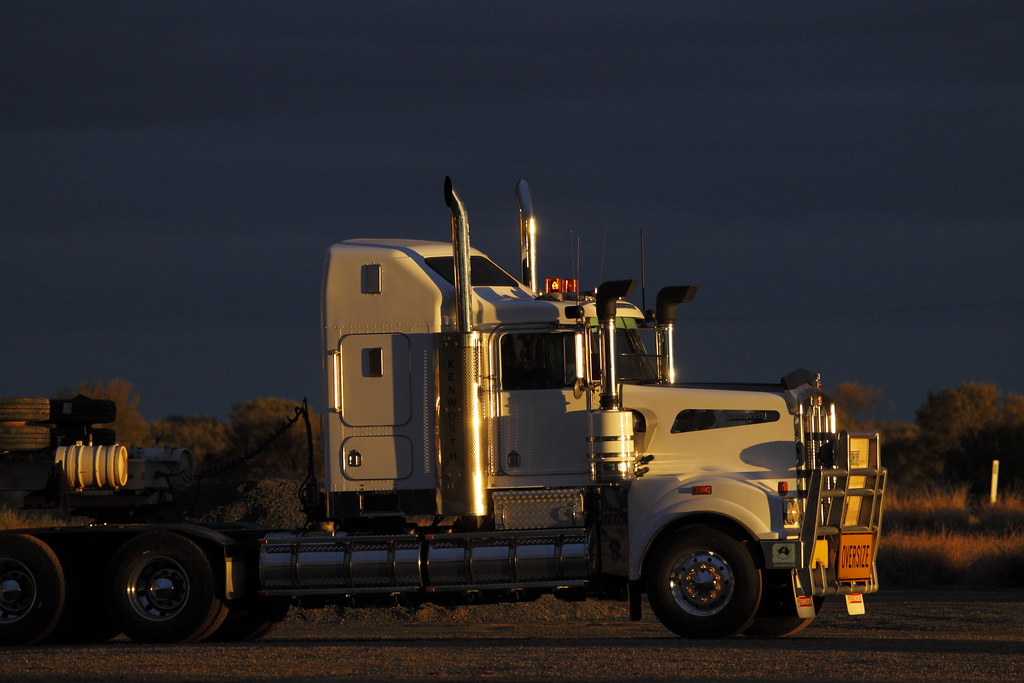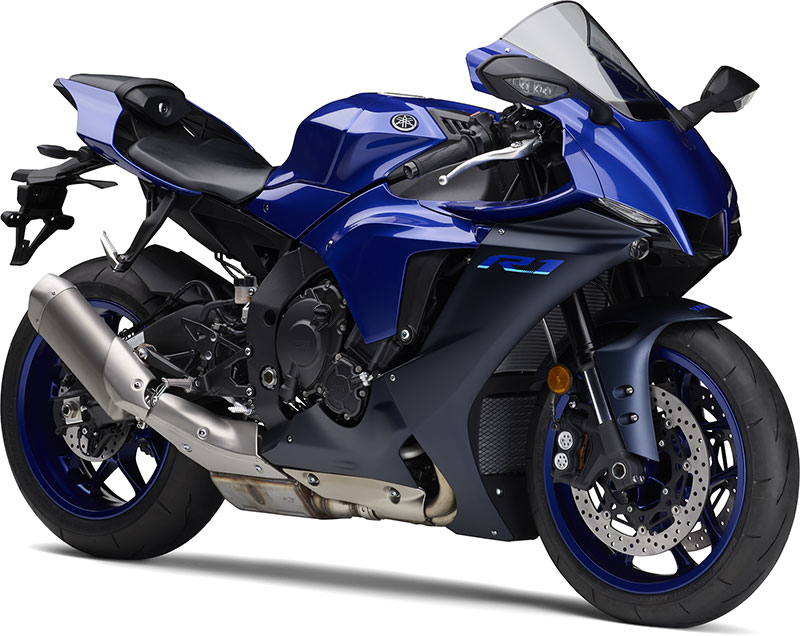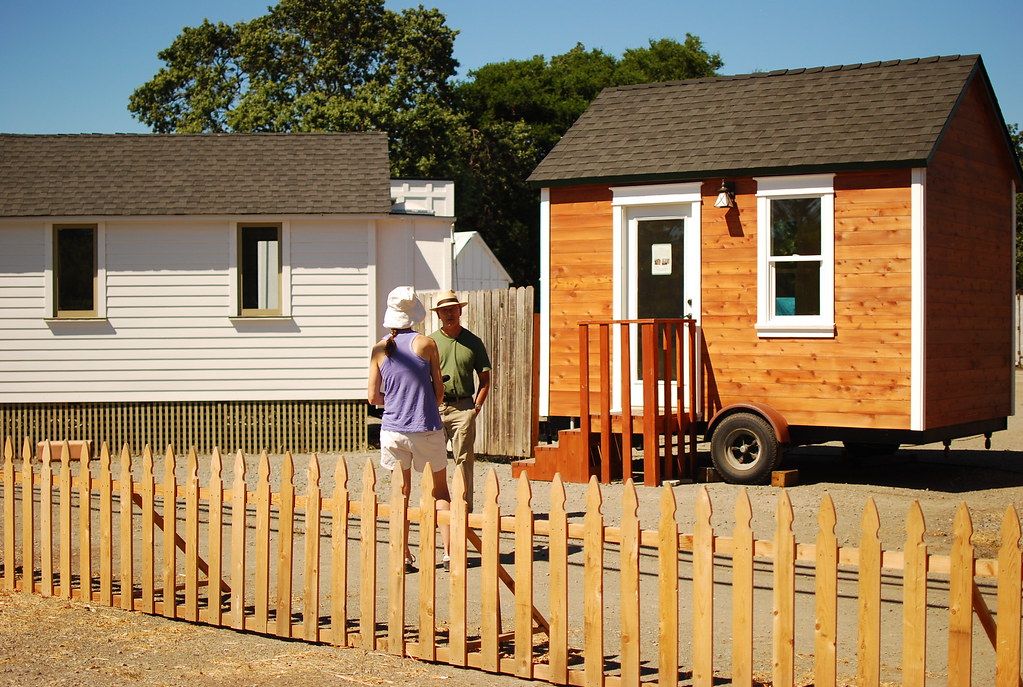
There’s a curious alchemy at play in the automotive world, a process where initial failure isn’t always the end of the road. We’ve all seen them, those magnificent machines that rolled off the production line with the weight of expectation, only to buckle under the strain, destined for the ignominious ‘flop’ file. Yet, in a twist as dramatic as any Hollywood screenplay, some of these fallen stars find a second life, not on the open road as everyday commuters, but under the glare of movie lights, reborn as cinematic legends. It’s a tale of redemption, of unloved metal finding its true calling, often becoming more famous for its on-screen antics than its original sales figures.
Forget what the sales charts tell you; the true measure of a car’s character isn’t always found in its quarterly reports. It’s in the stories it inspires, the emotions it evokes, and, sometimes, the iconic roles it lands in Tinseltown. From opulent luxury barges to quirky compacts, these vehicles, once dismissed as commercial missteps, have been elevated to cult status, proving that sometimes, all a car needs is the right agent – and a cracking script – to become immortal. So, buckle up, because we’re about to take a thrilling ride through the unexpected careers of some of Hollywood’s most unlikely automotive heroes, cars that proved a flop on the forecourt could be a smash hit on the silver screen.
This is the story of automotive underdogs, the ones that stumbled out of the gate but sprinted into the hearts of millions, not with groundbreaking sales, but with unforgettable performances. They might have been victims of economic downturns, baffling design choices, or simply being too far ahead of their time, but thanks to the magic of movies and television, these machines transcended their initial commercial woes. They became characters in their own right, forging legacies far beyond what their original designers or marketing teams could ever have dreamed. Let’s peel back the layers and discover how these mechanical misfits got their triumphant second act.

1. **Duesenberg Model J: The Roaring Twenties’ Ultimate Luxury Flop Turned Villain’s Ride**When you think of the Duesenberg Model J, images of opulent wealth, Jazz Age extravagance, and perhaps a certain fur-clad villainess might spring to mind. And you wouldn’t be wrong. This car, truly a titan of its era, was initially an ultra-expensive marvel, boasting a massive inline eight-cylinder engine with nearly seven liters of displacement. It cranked out a formidable 265 horsepower, a figure that would make many modern cars blush, and could hit a top speed of 116 mph in third gear – an astonishing feat for the late 1920s and early 1930s.
Indeed, Duesenbergs had already carved out a significant reputation, not just for luxury, but for raw performance on the racetrack. They were the only American car ever to conquer the French Grand Prix, a testament to their engineering prowess. Furthermore, Duesenbergs crossed the finish line first at the legendary Indianapolis 500 an impressive three times in a short span: 1924, 1925, and 1927. When E.L. Cord acquired the company, his design influence helped sculpt the Duesenberg into the iconic form we recognize today, streamlining the car from its earlier chassis iterations before the Model J.
This exorbitant price tag, combined with the economic turmoil of the time, meant that production numbers remained incredibly low, with only about 500 units ever seeing the light of day. Commercially, it was a colossal challenge to shift these automotive masterpieces. They weren’t exactly flying out of showrooms, but their sheer audacity, engineering, and visual presence left an indelible mark. And that mark, years later, would find its way onto the silver screen, transforming a real-world sales struggle into cinematic immortality. The distinctive, menacing exhaust pipes jutting from the hood, combined with its imposing silhouette, made it a perfect fit for characters with a penchant for the dramatic and a taste for the villainous.
Today, the Duesenberg Model J is no longer a challenging sell; it’s a fiercely contested prize. At auction, these magnificent machines command prices that truly bulge the eyes, with collectors battling it out in heated bidding wars. The average auction price for a Duesenberg Model J is a jaw-dropping $1.692 million, reaffirming its status as a car only the wealthiest individuals can still afford. Its legendary status, fueled by its historical significance, rarity, and unmistakable presence, has been further amplified by its association with pop culture villains, like the character “Cruella de Ville” – forever cementing its image as the ultimate ride for those who prefer their luxury with a hint of menace. What was once a commercial flop became a priceless icon, demonstrating that true grandeur can transcend market trends.
Car Model Information: 2019 Subaru Outback 3.6R Limited
Name: Sfn
Caption: 1930 Duesenberg J Murphy Torpedo Convertible
Manufacturer: Duesenberg
Aka: Duesenberg J,Duesenberg SJ (supercharged),Duesenberg SSJ (short-wheelbase supercharged)
Production: 1928–1937,481 produced (445 Model J, 36 Model SJ)
Assembly: Indianapolis,Indiana,United States
Designer: Gordon Buehrig
Class: Full-size car,Luxury vehicle
BodyStyle: Coachbuilt to owner’s preference
Layout: Front-engine, rear-wheel-drive layout#Front mid-engine, rear-wheel-drive layout
Engine: 420 cuin
Abbr: on
Disp: Sfn
Transmission: Manual transmission
Wheelbase: {{convert,142.5,in,mm,1,abbr=on,disp=flip
Predecessor: Duesenberg Model A
Sp: us
Categories: 1930s cars, All articles with unsourced statements, Articles with short description, Articles with unsourced statements from December 2013, Articles with unsourced statements from June 2012
Summary: The Duesenberg Model J is a luxury automobile made by Duesenberg exclusively in 1928 and offered for ten subsequent years. Intended to compete with the most luxurious and powerful cars in the world, it was introduced in 1928, the year before the stock market crash that led to the Great Depression. Duesenberg Motors Company went bankrupt in 1937.
Get more information about: Duesenberg Model J
Buying a high-performing used car >>>
Brand: Duesenberg Model: Model J
Price: $21,995 Mileage: 77,376 mi.
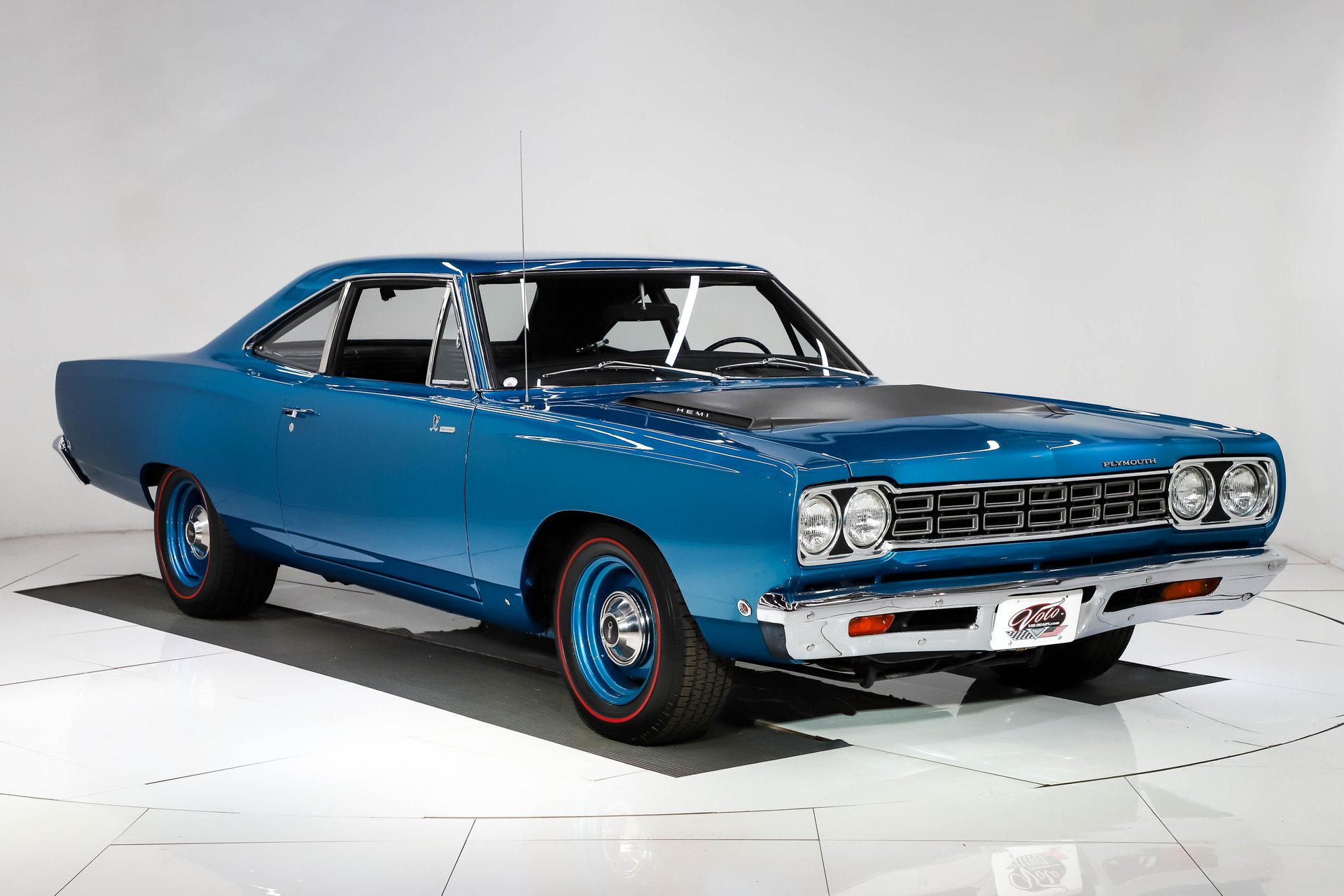
2. **Plymouth Fury: Stephen King’s “Christine” Transforms a Recession Casualty into a Demonic Star**
In the annals of automotive history, the 1958 Plymouth Fury holds a uniquely chilling place, largely thanks to the master of horror, Stephen King, and its unforgettable starring role in the film “Christine.” But before its demonic debut, the Fury’s journey was rather less supernatural and far more mundane: it was a victim of unfortunate timing and economic headwinds. Initially, the Fury began life as a high-performance trim variation available on the Plymouth Belvedere. However, its distinctive style and burgeoning appeal quickly saw it evolve into its own individual vehicle, immediately becoming the most expensive Plymouth on offer at the time, retailing for a substantial $3,067.
The 1958 model was a genuine stunner, a stylish muscle car available in five different iterations, including a four-door sedan, a two-door convertible, and a four-door wagon. Under the hood, it shared an engine with the formidable Dodge Coronet, a vehicle often favored by police forces of the era. This sizable, well-powered machine typically featured a 5.2-liter engine producing a robust 290 horsepower as standard. For those truly seeking thrills, an upgrade to a 5.7-liter engine pushed the output to a whopping 305 horsepower, ensuring it had plenty of grunt to back up its sharp looks.
On paper, the 1958 Plymouth Fury was a surefire hit. It boasted a captivating design, offered impressive power, and was priced reasonably for its segment. It *should* have flown off the dealership lots. Yet, fate intervened in the form of a crippling recession that gripped the nation precisely when the Fury made its grand entrance. This economic downturn effectively decimated the market for such cars, with consumers pivoting sharply towards cheaper, more economical models. The Fury, despite all its merits, simply couldn’t compete with the sudden shift in buyer priorities, and its sales figures reflected this harsh reality, falling far short of expectations.
Decades later, its commercial failure was dramatically overshadowed by its terrifying revival on the silver screen. The movie adaptation of Stephen King’s chilling novel “Christine” single-handedly transformed the 1958 Plymouth Fury from a forgotten relic of a bygone recession into an automotive icon, synonymous with malevolent machinery. The film breathed new, albeit sinister, life into the car, cementing its place in cinematic lore. Today, these Furies are highly coveted by collectors, fetching an average price of around $50,000. However, in the right auction environment, with a dedicated group of buyers, they have been known to sell for significantly higher sums, proving that sometimes, being possessed by a fictional evil spirit can do wonders for a car’s resale value.
Car Model Information: 1960 Plymouth Fury
Name: Plymouth Fury
Caption: 1959 Plymouth Sport Fury
Manufacturer: Plymouth (automobile)
Aka: Plymouth Sport Fury (1959, 1962–1971),Plymouth VIP (1966–1969)
Production: 1958–1978
ModelYears: 1959–1978
Assembly: bulleted list
Class: Full-size,Mid-size,Full-size,Mid-size,Full-size,Mid-size
Layout: FR layout
Predecessor: Plymouth Belvedere,Plymouth Plaza,Plymouth Savoy
Successor: Plymouth Gran Fury,Plymouth Gran Fury
Sp: us
Categories: 1960s cars, 1970s cars, All articles needing additional references, Articles needing additional references from December 2018, Articles with short description
Summary: The Plymouth Fury is a model of automobile that was produced by Plymouth from 1955 until 1989. It was introduced for the 1956 model year as a sub-series of the Plymouth Belvedere, becoming a separate series one level above the contemporary Belvedere for 1959. The Fury was a full-size car from 1959 until 1961, then a mid-size car from 1962 until 1964, again, a full-size car from 1965 through 1974, and again, a mid-size car from 1975 through 1978. From 1975 until 1977, the Fury was sold alongside the full-size Plymouth Gran Fury. In 1978, the B-body Fury was the largest Plymouth, and by 1979, there was no large Plymouth. This product gap was filled in 1980 with the R-body Gran Fury, followed by the M-body Fury in 1982. Production of the last V8, RWD Plymouth Fury ended at the Kenosha Main assembly plant in Kenosha, WI, on December 23, 1988. Unlike its sibling brand, Dodge, Plymouth would not live to see the resurgence of the large, V8/RWD sedan.
Get more information about: Plymouth Fury
Buying a high-performing used car >>>
Brand: Plymouth Model: Fury
Price: $75,000 Mileage: 44,509 mi.
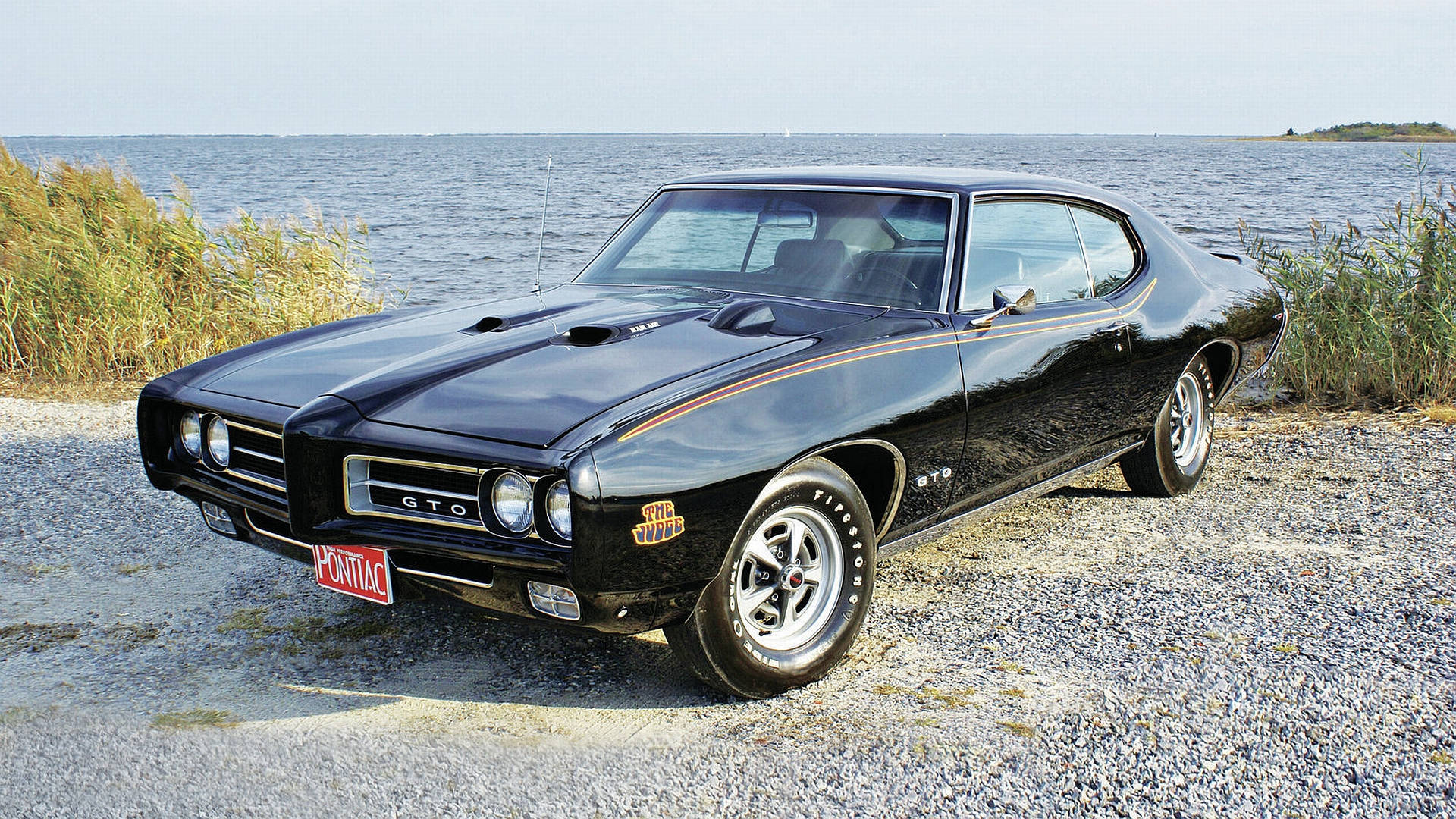
3. **Pontiac Trans Am: How “Smokey and the Bandit” Single-Handedly Ignited a Sales Explosion**The Pontiac Trans Am, particularly its late-1970s iterations, is undeniably etched into the collective consciousness as a symbol of cool, rebellious Americana, almost entirely thanks to one iconic movie: “Smokey and the Bandit.” While the first-generation Pontiac Firebird Trans Am (1967-1969) certainly held its own, with respectable production totals, it was the second generation, starting with the 1970 model year, that truly became a legend, albeit after a somewhat modest beginning. Initially, production totals for all Firebird models – including Base, Esprit, Formula, and Trans Am – hovered under 100,000 units each year. It was a solid performer, but not yet a sensation.
However, a pivotal moment arrived between the 1976 and 1977 model years. The production total for all four Firebird models in 1976 was a respectable 110,755 units. Then, seemingly overnight, the demand skyrocketed. The very next model year, 1977, saw production totals reach an astonishing 155,735. This massive jump wasn’t a result of a new engine or a radical redesign; it was the direct consequence of a film featuring a charismatic Burt Reynolds, a truck full of beer, and a black and gold muscle car that captured the imagination of an entire generation.
According to Hagerty, Pontiac enjoyed an incredible 25,000 “extra Trans Am sales” specifically in 1978, a direct result of the immense popularity and release of “Smokey and the Bandit.” The movie, filmed just prior to the official launch of the 1977 model year Trans Am, necessitated the use of 1976 Trans Am vehicles for the on-screen action. Resourcefully, these cars were modified to visually match the upcoming 1977 models, ensuring they looked like the very latest and greatest. This clever cinematic trickery worked wonders, creating an aspirational desire for the vehicle that was about to hit showrooms.
The film instantly cemented the Trans Am’s status as a quintessential muscle car, a symbol of freedom and adrenaline-fueled chases. Despite the on-screen cars being modified 1976 models, it’s the 1977 Trans Am that collectors now passionately seek out, making it a highly desirable piece of automotive and cinematic history. These vehicles have seen a remarkable appreciation in value, selling at auction for anywhere from a few thousand dollars in fair condition to an eye-watering $495,000 for the most prized and meticulously preserved iterations, as evidenced by Barrett Jackson auctions. What started as a gradual success story became a cultural phenomenon, proving that sometimes, all it takes is a good chase sequence and a dash of outlaw charm to turn a popular car into an absolute icon.
Recap: We’ve journeyed through the incredible transformations of machines like the Duesenberg, Plymouth Fury, and Pontiac Trans Am, each proving that a rough start on the sales charts doesn’t mean the end of the road. Their stories, like many in Hollywood, are testaments to unexpected comebacks, where metal and rubber transcend mere transportation to become something far more profound: characters. Now, let’s peel back the layers on three more cinematic automotive heroes, cars that proved the silver screen could be the ultimate redemption arc for those initially unloved. These are the machines that, through a stroke of cinematic genius, went from showroom struggles to legendary status, forever changing how we perceive their once-questioned designs and engineering.
It’s a testament to the enduring power of storytelling that a car can be a commercial misstep and yet, through the magic of film, carve out an indelible niche in our hearts and minds. From quirky designs to engineering quirks, these next contenders faced their share of public indifference or outright criticism upon release. Yet, they found their true purpose not in quarterly sales reports, but in high-octane chases, time-bending adventures, or even as the grim companion to a chemistry teacher’s descent into darkness. Prepare for another thrilling chapter in the saga of the automotive underdog, where the screen gives new life to forgotten metal.
Car Model Information: 2019 Subaru Outback 3.6R Limited
Name: Pontiac Firebird
Caption: The second, third, and fourth generations of,the Pontiac Firebird Trans Am
Manufacturer: Pontiac (automobile)
Production: February 23, 1967 – August 30, 2002
ModelYears: 1967 – 2002
Class: Pony car,Muscle car
Platform: GM F platform
Related: Chevrolet Camaro
Layout: Front engine, rear-wheel-drive layout
Categories: 1970s cars, 1980s cars, 1990s cars, 2000s cars, All articles with dead external links
Summary: The Pontiac Firebird is an American automobile built and produced by Pontiac from the 1967 to 2002 model years. Designed as a pony car to compete with the Ford Mustang, it was introduced on February 23, 1967, five months after GM’s Chevrolet division’s platform-sharing Camaro. This also coincided with the release of the 1967 Mercury Cougar, Ford’s upscale, platform-sharing version of the Mustang.
The name “Firebird” was also previously used by GM for the General Motors Firebird series of concept cars in the 1950s.
Get more information about: Pontiac Firebird
Buying a high-performing used car >>>
Brand: Pontiac Model: Trans Am
Price: $21,995 Mileage: 77,376 mi.

4. **DeLorean DMC-12: The Ultimate Time-Travel Machine, Rescuing a Production Disaster from Obscurity**
Ah, the DeLorean DMC-12. If ever a car embodied the phrase “ahead of its time” in the most ironic sense, this is it. When it burst onto the scene in 1981, it was an instant talking point, primarily for its radical, brushed stainless-steel body, striking gull-wing doors, and the undeniably cool vision of its creator, John DeLorean. This was a car designed to turn heads, a genuine concept car brought to life, promising a slice of the future on your driveway. And for a moment, the automotive world held its breath, captivated by its audacious styling and the dream of something truly different.
However, the reality quickly diverged from the dream. Beneath that gorgeous, unpainted exterior lay an undersized 2.85-liter V6 engine, producing a rather underwhelming 130 horsepower. For a car that looked like it could break the sound barrier, its actual performance was, shall we say, more akin to a gentle stroll through a park. The pursuit of exhilarating speed often proved elusive, with drivers struggling to coax it to its purported 130 mph top speed. This, coupled with production delays, questionable quality control issues, and a frankly astronomical base price of $25,000 – an “absolutely absurdly expensive” sum for the era – meant that the DeLorean was a commercial laughingstock, struggling to find buyers and quickly falling into a financial quagmire.
Then, something magical happened. In 1985, Robert Zemeckis’s cinematic masterpiece, “Back to the Future,” didn’t just use the DeLorean; it made the DeLorean the undeniable star. Suddenly, those quirky gull-wing doors weren’t a design eccentricity; they were the portal to another dimension. The stainless-steel body wasn’t just striking; it was the ideal material for a time-travel conduit. With a few “flux capacitors” and a critical 88 mph, this automotive failure was reborn as the ultimate time machine, ferrying Marty McFly and Doc Brown through the annals of history. Its on-screen persona completely eclipsed its real-world shortcomings, proving that an epic script could do what no marketing campaign ever could.
The movie “Immortalized forever” the DMC-12, transforming it from a symbol of failed ambition into a globally recognized icon. Without this Hollywood link, the DeLorean would likely be relegated to a footnote in automotive history, perhaps only remembered by a few dedicated enthusiasts for its bizarre backstory, including John DeLorean’s own dramatic personal struggles. But thanks to its role in one of cinema’s most beloved franchises, interest in this once-derided vehicle was not just renewed, but utterly reinvigorated. Today, the initial “absurdly expensive” $25,000 price tag has been “more than doubled,” with “an original DeLorean” fetching “$40k on upward” at auction, especially if “in good condition.” It’s a spectacular demonstration that sometimes, all a struggling car needs is a little help from a time-traveling professor and a high school kid.
Car Model Information: 1982 Delorean DMC-12
Name: DMC DeLorean
Alt: 1983 DeLorean
Caption: 1983 DeLorean
Manufacturer: DeLorean Motor Company
Production: January 21, 1981 – December 1982
ModelYears: 1981–1983
Assembly: Dunmurry
Designer: Giorgetto Giugiaro
Class: Sports car
BodyStyle: coupé
Layout: Rear-engine, rear-wheel-drive layout
Doors: Gull-wing doors
Engine: 2.85 L
Abbr: on
Powerout: 130 hp
Transmission: 5-speed manual ,3-speed automatic
Wheelbase: 2413 mm
Length: 4267 mm
Width: 1988 mm
Height: 1140 mm
Weight: 1233 kg
Sp: us
Categories: 1980s cars, All Wikipedia articles written in American English, Articles with short description, Automobiles with backbone chassis, Automobiles with gull-wing doors
Summary: The DMC DeLorean is a rear-engine, two-seat sports car manufactured and marketed by John DeLorean’s DeLorean Motor Company (DMC) for the American market from 1981 until 1983—ultimately the only car brought to market by the fledgling company. The DeLorean is sometimes referred to by its internal DMC pre-production designation, DMC-12, although this was not used in sales or marketing materials for the production model.
Designed by Giorgetto Giugiaro, the DeLorean is noted for its gull-wing doors and brushed stainless-steel outer body panels, as well as its lack of power and performance. Though its production was short-lived, the DeLorean became widely known after it was featured as the time machine in the Back to the Future films.
With the first production car completed on January 21, 1981, the design incorporated numerous minor revisions to the hood, wheels and interior before production ended in late December 1982, shortly after DMC filed for bankruptcy and after total production reached an estimated 9,000 units.
Despite the car having a reputation for poor build quality and an unsatisfactory driving experience, the DeLorean continues to have a strong following, driven in part by the popularity of Back to the Future. 6,500 DeLoreans were estimated to still be on the road as of 2015.
Get more information about: DMC DeLorean
Buying a high-performing used car >>>
Brand: DeLorean Model: DMC-12
Price: $129,950 Mileage: 3,145 mi.

5. **Pontiac Aztek: From “Ugliest Car” to Walter White’s Unforgettable Co-Star in “Breaking Bad”**If there’s one car that almost universally makes people recoil, it’s the Pontiac Aztek. Launched between 2001 and 2005, it quickly earned the unenviable reputation as one of the “iconically ugly cars” of all time. Pontiac, bless their optimistic hearts, had intended the Aztek to be a groundbreaking crossover, a versatile, adventure-ready vehicle packed with innovative features. It boasted a capacious interior, optional all-wheel drive, and even a built-in camping package designed to appeal to a younger, active crowd. On paper, it sounded like a stroke of genius, a “community-designed” vehicle where “everyone’s idea seemed to find a place.”
The problem, however, was in the execution. The Aztek’s “weird shape and back hatch that everyone agreed was awful” meant that its “bizarre, clunky design was widely criticized.” Its awkward proportions and mismatched styling elements made it a visual challenge that most buyers simply couldn’t get past, regardless of its touted practicality. Pontiac had grand ambitions, aiming to sell 70,000 Azteks a year, then scaling back to 50,000, but sales “limped to just 27,000 in the first year.” By the time production ceased in 2005, only around 119,000 had been sold, a far cry from initial projections, solidifying its place in “ugly car” and “worst car” lists for decades to come.
Just when it seemed the Aztek was destined for permanent ridicule, a television show came along that didn’t just feature the car, but made it an integral part of a character’s journey. “Breaking Bad,” the critically acclaimed series about chemistry teacher Walter White’s descent into a life of crime, became the unlikely savior of the Aztek’s reputation. White’s battered, beige Aztek wasn’t just transportation; it was a character in itself, a physical manifestation of his unassuming, pre-Heisenberg persona. The car, much like White himself, was initially unloved and overlooked, making it the perfect symbolic companion for his transformation.
The show “firmly cemented it in the TV vehicle hall of fame,” and “created an interest in one of the ugliest cars ever.” Walter White’s eventual selling of the Aztek on his 51st birthday for “a measly $50,” one dollar for “each year of his old life,” further added to its legend, transforming its iconic ugliness into a badge of honor. While the Aztek’s “original MSRP placed this car at $21,445,” and its median price currently hovers “around $5500,” its association with “Breaking Bad” has ensured that “prices have been fluctuating wildly.” It’s proof that with the right role, even the most visually challenged car can find a cult following, proving that true automotive value can indeed be “in More than Just the Price Tag.”
Car Model Information: 2003 Pontiac Aztek Base Fwd 4dr SUV
Name: Pontiac Aztek
Manufacturer: General Motors
Production: July 2000 – December 2004
Assembly: Ramos Arizpe
Designer: Tom Peters (chief designer: 1997)
Class: Mid-size crossover SUV
BodyStyle: SUV
Platform: GM U platform
Related: Buick Rendezvous
Layout: Front-engine, front-wheel-drive layout
Engine: General Motors 60° V6 engine#LA1,V6
Transmission: GM 4T65-E transmission,Automatic transmission
Wheelbase: 108.3 in (2,751 mm)
Length: 182.1 in (4,625 mm)
Width: 73.7 in (1,872 mm)
Height: 66.7 in (1,694 mm)
Weight: 3,779–4,043 lb (1,714–1,834 kg)
Predecessor: Pontiac Sunrunner
Successor: Pontiac Torrent
ModelYears: 2001–2005
Categories: All-wheel-drive vehicles, All articles needing additional references, All articles with unsourced statements, Articles needing additional references from October 2013, Articles with short description
Summary: The Pontiac Aztek is a mid-size crossover SUV marketed by General Motors introduced in 2000 for the model years 2001 through 2005. As a four-door crossover with front-wheel drive and optional all-wheel drive, the Aztek featured a four-speed automatic transmission with a V6 engine. Marketed by Pontiac as a “sport recreational vehicle,” the Aztek used a shortened platform shared with GM’s minivans (e.g., the Pontiac Montana) featuring 94 cubic feet of cargo room with its rear seats removed. The design employed conventional rear outswing doors rather than sliding doors, and a split rear tailgate, the lower section formed with seat indentations and cupholders. Other features included a front center console that doubled as a removable cooler, optional rear stereo controls in the cargo area, optional sliding cargo floor with grocery compartments, and optional camping package with an attachable tent and air mattress.
Get more information about: Pontiac Aztek
Buying a high-performing used car >>>
Brand: Pontiac Model: Aztek
Price: $1,499 Mileage: 157,677 mi.

6. **AMC Pacer: The “Mirthmobile” That Took a Bubble-Shaped Compact from Flop to Comedy Icon in “Wayne’s World”**
Few cars have captured the quirky spirit of the 1970s quite like the AMC Pacer, though perhaps not in the way its designers had initially hoped. Launched in 1975, the Pacer was undeniably unique, with its “futuristic bubble-like shape” and “unusually wide stance for a compact car.” AMC marketed it as a revolutionary small car, boasting the interior spaciousness of a much larger vehicle, a bold attempt to cater to evolving consumer needs and a shift towards more compact designs. Its promotional campaign even grandly declared, “When you buy any other car, all you end up with is today’s car. When you get a Pacer, you get a piece of tomorrow.”
Unfortunately, “tomorrow” didn’t quite pan out as AMC envisioned. The Pacer’s “radical styling wasn’t for everyone.” Its “oversized glass windows made it look awkward,” a design choice that proved polarizing at best, and outright mocked at worst. Performance was another Achilles’ heel; its considerable weight, coupled with “underpowered engines,” resulted in sluggish driving dynamics. To add insult to injury, AMC’s original plans for a fuel-efficient rotary engine fell through, forcing them to shoehorn in a conventional inline-six, which further compromised both its fuel economy and handling. The mid-70s oil crisis delivered the final blow, as buyers understandably gravitated towards more efficient alternatives. By the end of its production run in 1980, after just four years, the Pacer had become more of an “oddity than a success.”
Decades passed, and the Pacer seemed destined to remain a curious footnote in automotive history, a testament to ambitious but ultimately flawed design. Then, in 1992, came “Wayne’s World.” The comedy film, a pop culture phenomenon, didn’t just feature an AMC Pacer; it elevated it to legendary status as the “Mirthmobile,” the humble but iconic ride of Garth Algar and Wayne Campbell. The sight of Garth behind the wheel of the distinctive, powder-blue Pacer, headbanging to “Bohemian Rhapsody” with his pals, became an instantly recognizable and beloved cinematic moment, infusing the car with an infectious, unpretentious cool that it never had during its commercial lifetime.
“The famous Bohemian Rhapsody scene has made the car immortal,” transforming the Pacer from a commercial failure into a cherished comedy icon. What was once seen as an awkward design became an endearing symbol of youthful irreverence and rock-and-roll camaraderie. Today, the AMC Pacer is “remembered as one of the quirkiest cars ever made,” and its association with “Wayne’s World” has given it a permanent place in the pantheon of cinematic vehicles. It’s a perfect example of how the right role, steeped in nostalgia and humor, can rescue a struggling car from oblivion, proving that sometimes, all you need is a good soundtrack and a couple of headbanging dudes to become an enduring legend. Party on, Pacer!
And there you have it – a captivating tour through the lives of six automotive outsiders who, despite stumbling at the sales gate, sprinted into immortality on the silver screen. These cars, from the opulent Duesenberg Model J to the quirky AMC Pacer, remind us that the road to legend isn’t always paved with commercial success. Sometimes, it takes a chilling tale, a high-speed chase, a time-bending adventure, or even a dramatic descent into villainy to truly unlock a vehicle’s potential.
Hollywood, it turns out, is the ultimate automotive fairy godmother, transforming commercial pumpkins into iconic carriages. These machines are more than just metal, glass, and rubber; they are enduring characters, symbols of their cinematic moments, and tangible pieces of pop culture history. They prove that true value isn’t always measured in MSRPs or unit sales, but in the indelible marks they leave on our imaginations. So, the next time you see a car that didn’t quite make the grade in the showroom, remember these stars – because you never know when a director might just spot its hidden potential, granting it a second, glorious life on the silver screen. What a ride!

